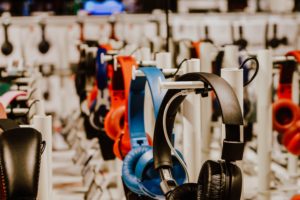Picture By John Hoang on Unsplash
Introduction:
In EDCI-565 we had the opportunity to listen to Kim Ashbourne present on the significance of accessibility of education to all learners. Her presentation pin-pointed various resources that outline the human rights all individuals have in terms of accessing education, in addition to providing educators with further information in order to assist them in gaining ideas in which to help learners with diverse needs. Two specific websites of interest that were shared, included World Wide Web Consortium (W3C) which focuses on “strategies, standards, resources to make the Web accessible to people with disabilities” (W3C Web Accessibility Initiative (WAI), n.d.), and Universal Design for Learning (UDL) which provides “a framework to improve and optimize teaching and learning for all people based on scientific insights into how humans learn”(“CAST: About universal design for learning,” 2019). The area of accessibility to learning connects with me both personally and professionally, in terms of my own experience with a hearing impairment, and as an educator working to support my students during the interruption of regular classes because of COVID-19.
Personal Connection:
On a personal level, as previously mentioned, I have a hearing impairment caused by a viral ear infection that damaged my right ear and resulted in between 60% – 70% hearing loss. After multiple scans and cochlear injections, the end result was acquiring a hearing aid. I am grateful to have the hearing device, however, it is not the same as having a full range of natural hearing ability. Sound is different and does take time for your brain (and in my case patience as well) to adapt. Background noise and the speed of a speaker’s speech can impede clarity and understanding; and furthermore, the direction of sound can be difficult to pinpoint in terms of its origin (coming from left or right). Consequently, I have had to make adaptations to assist myself where my hearing is concerned. The changes and at times frustrations, all be them mild, have definitely opened my eyes and increased my understanding of the necessity of accessibility for all learners in terms of any challenges they endure. More specifically, it has forced me to pay closer attention, professionally, to various ways or types of technology or teaching methods I can use so as to assist learners reach their goals. Some examples of technology that have assisted students either directly in my classes or within our school include, but are not limited too, the use of individual laptops or tablets in lieu of physically writing down notes or completing assignments, digital translators for international students that do not have a strong background in English, speech to text programs for those with challenged motor skills, text to reading programs for those learners with reading difficulties, and videos/dvds for visual learners. Having access to various technologies are essential to support learners with their various modes of learning and diverse needs, as it provides a gateway to equity in their learning, as much as my hearing aid supports me in my endeavours.
Educational Challenges to Accessibility During Covid-19:
The onset of COVID-19 has been a further eye-opening and challenging experience in terms of accessibility to online education and support. As an educator, it has been difficult to provide online lessons, assignments, activities and support as most of my learners rely on the digital tools available to them at the school, and have little to no access to technology at home, for various reasons. Resulting from these digital challenges, most of my learners and/or guardians requested hard copies or packages that could be picked up and dropped off on a routine basis. Providing physical packages were better than nothing. I was also able to follow up with support and discussions via texting, emailing and phone calls. However, not having the same technical support at home, as is available and/or relied upon by some at school, did limit some learners’ access to equity in their education.
Conclusion:
In the coming weeks, as our provincial government releases plans for the next school year, I hope there are considerations about opportunities for access to those students living in remote locations, in families that are socio-economically challenged, or living with learning challenges to be able to access the digital supports they need to enhance their educational experiences and equity in their learning.

